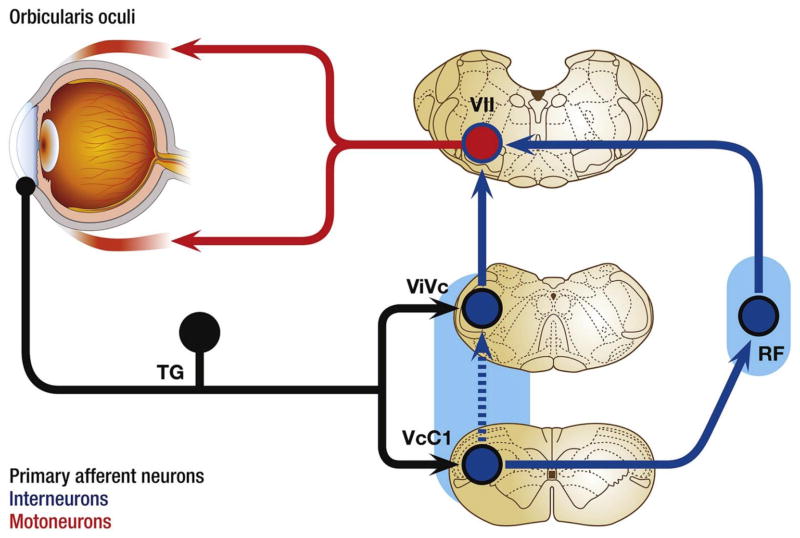Fig. 4.
The corneal eye blink reflex is initiated by the free nerve endings in the cornea and involves the trigeminal nerve and ganglion (TG), the brainstem nuclei (VcC1: caudalis/upper cervical cord junction and ViVc: interpolaris/caudalis transition region), interneurons in the reticular formation (RF), motor neurons in the facial nucleus (VII) and nerve, and the orbicularis oculi. As the afferent information is distributed bilaterally to facial motor neurons by the reticular formation interneurons, the eye blink response is consensual, that is, both eye lids will close to stimulation of the cornea of either eye.

